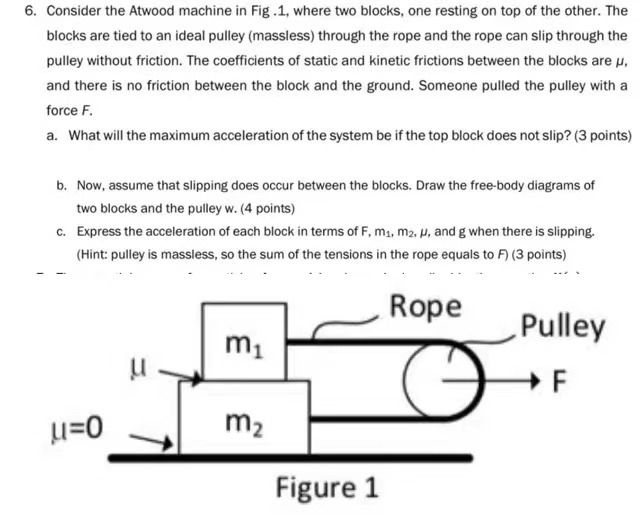Consider the Atwood machine in Fig. 1, where two blocks, one resting on top of the other. The blocks are tied to an ideal pulley (massless) through the rope and the rope can slip through the pulley without friction. The coefficients of static and kinetic frictions between the blocks are μ, and there is no friction between the block and the ground. Someone pulled the pulley with a force F. a. What will the maximum acceleration of the system be if the top block does not slip? ( 3 points) b. Now, assume that slipping does occur between the blocks. Draw the free-body diagrams of two blocks and the pulley w. (4 points) c. Express the acceleration of each block in terms of F, m1, m2, μ, and g when there is slipping. (Hint: pulley is massless, so the sum of the tensions in the rope equals to F ) (3 points)
